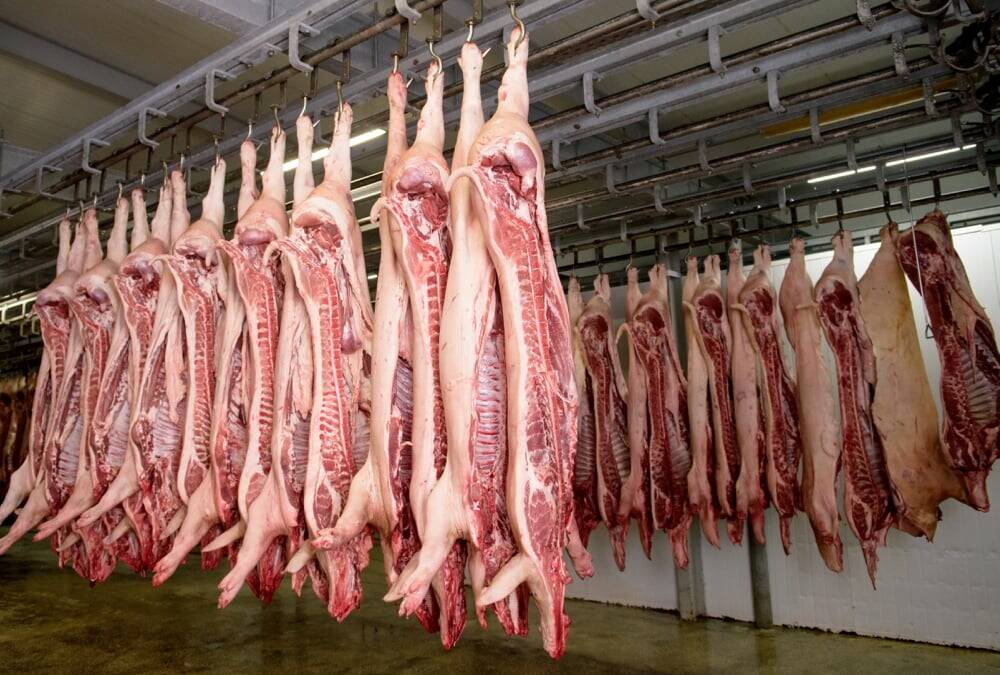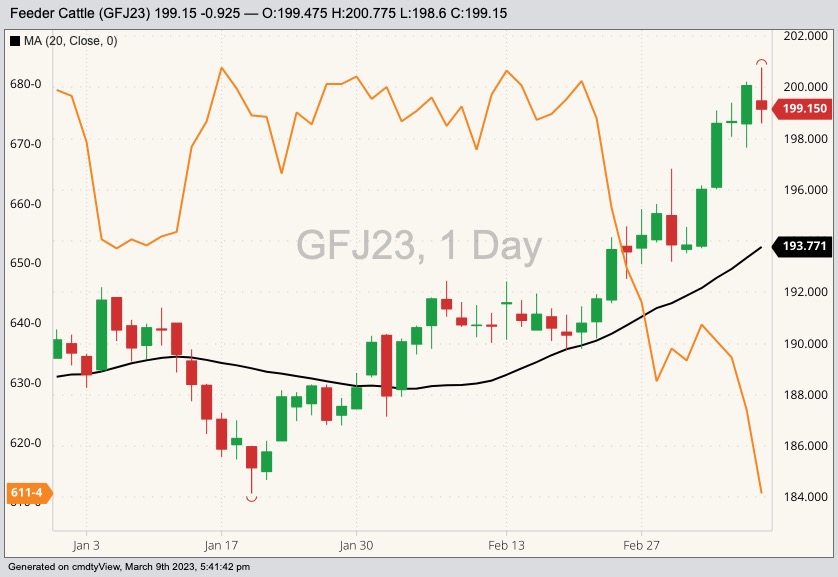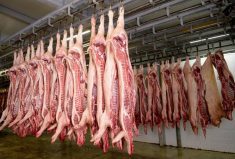Chicago | Reuters — Feeder cattle futures on the Chicago Mercantile Exchange on Thursday ended lower on Thursday as the front-month contract pulled back from its highest prices in nearly 7-1/2 years.
Traders took some profits after futures rallied recently on falling corn prices, brokers said, adding that continued declines in the corn market could fuel further gains in feeder cattle.
Corn futures on the Chicago Board of Trade fell more than two per cent, signaling cheaper feed costs for cattle.
Read Also

U.S. livestock: Lean hogs tick down on supply numbers, year-end positioning
Chicago | Reuters – Chicago Mercantile Exchange live cattle and lean hog futures fell while feeder cattle futures rose on…
“Feeders are set to really go higher if this corn market continues to weaken and it sure looks like to me that is going to happen,” said Dennis Smith, commodity broker for Archer Financial Services.
CME April feeder cattle futures settled 0.925 cents lower at 199.15 cents/lb. after setting a life-of-contract high of 200.775 cents (all figures US$).
Thinly traded March feeders settled 0.675 cent lower at 193.075 cents/lb. after reaching 194.325 cents, the highest on a continuous chart of front-month feeder cattle futures since October 2015.
“I just think it was a correction,” Smith said of the setback. “We haven’t done anything to damage this market technically.”
Live cattle futures also softened, with the benchmark CME April contract losing 0.65 cent to end at 164.8 cents/lb.
CME lean hog futures, meanwhile, were mixed. The nearby April contract settled 0.675 cent lower at 85.075 cents/lb., while June hogs rose 0.175 cent to end at 100.45 cents.
In demand news, U.S. beef export sales in the week ended March 2 were 5,600 tonnes for 2023, a marketing-year low, the U.S. Department of Agriculture said. Sales were down 31 per cent from the previous week and 67 per cent from the prior four-week average.
Weekly U.S. pork export sales were 22,100 tonnes for 2023, down 29 per cent from the previous week and 44 per cent from the prior four-week average, USDA said.
Traders said they will look to see if sales improve next week.
— Tom Polansek reports on agriculture and ag commodities for Reuters from Chicago.














